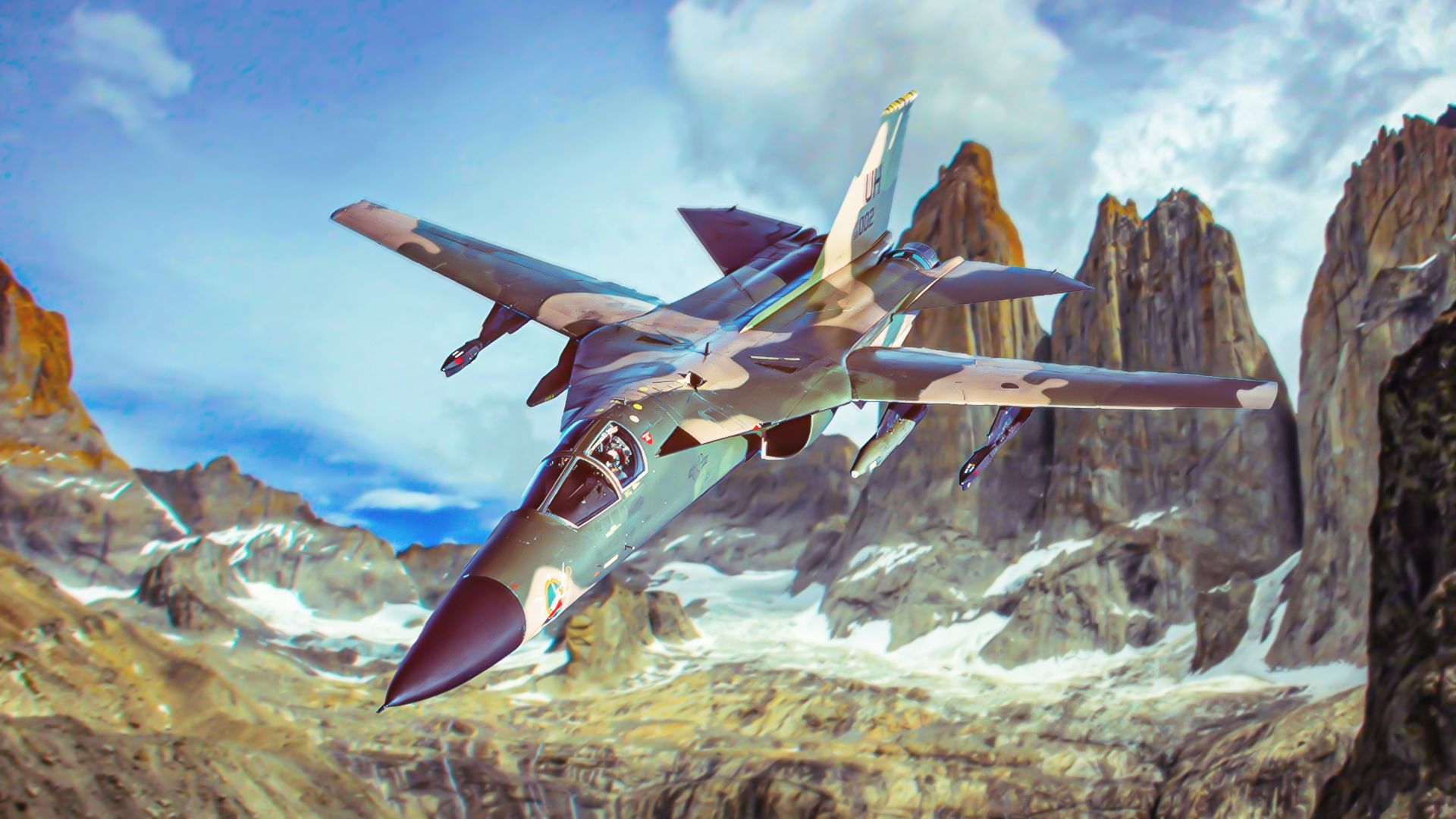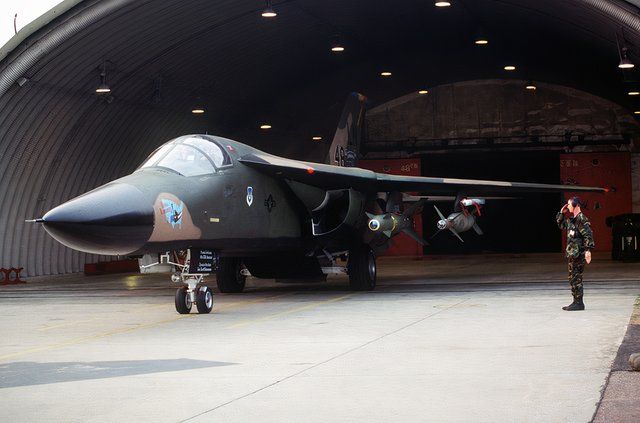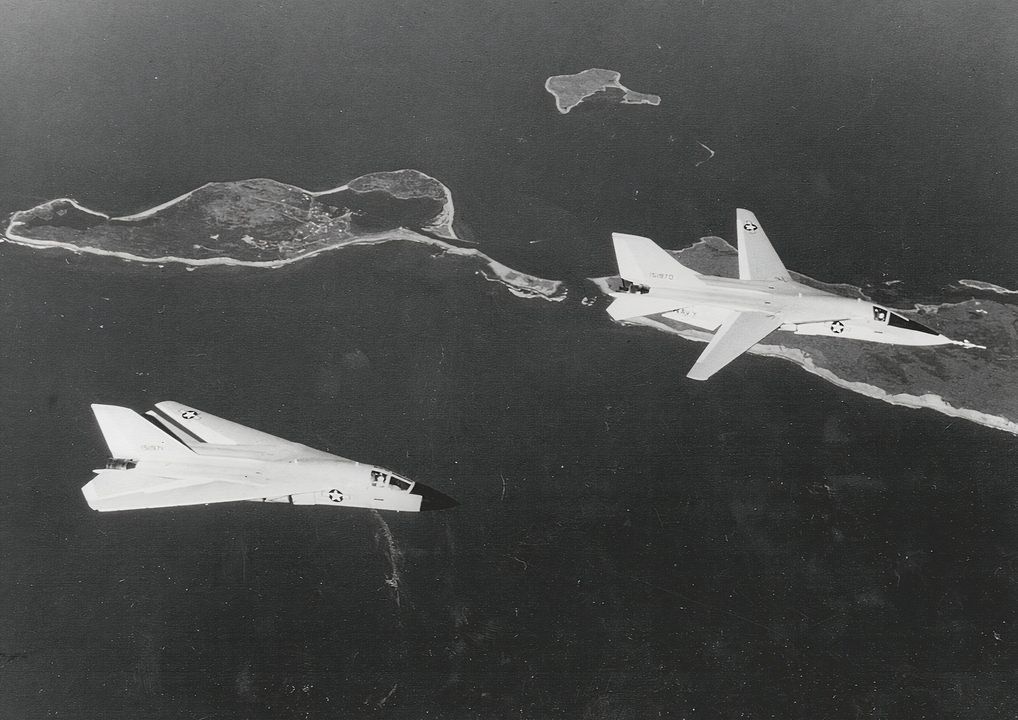The F-111 Aardvark is an all-weather strike aircraft capable of penetrating enemy defenses at low altitudes and delivering munitions to its target. The supersonic fighter bomber had two powerful TF30 turbofan engines and afterburner technology. Nellis Air Force Base received the first six deliveries of the F-111 original production in July 1967.
“The F-111 was certainly a revolutionary airplane. It was one of the most complicated airplanes ever built.” Air Marshall Geoff Brown AO (Royal Australian Air Force Pilot)
The F-111 was part of the Tactical Fighter Experimental (TFX) program in the early 1960s. The program aimed to satisfy the USAF’s demands for a multipurpose supersonic fighter/bomber and the US Navy’s long-range interceptor. The
General Dynamics
models were chosen above competitors like Lockheed Martin and Boeing.
Photo: STAFF SGT. David Nolan | The U.S. National Archives
It could reach a maximum of 1,452 mph, while its cruising speed is 685 mph. Its maximum range is 3,632 miles. The F-111 could accommodate an M61 Vulcan 20mm cannon and 24 conventional bombs in the internal bay or nuclear weapons. It could carry a variety of mission-specific ordnance, including laser-guided bombs (GBU-12, GBU-10, GBU-15b), anti-radar missiles (AGM-84 HARM), and air-to-surface missiles (AGM-142).
The first design adopted variable geometry or “swing” wings that offered exceptional aerodynamic efficiency. When the wings are fully extended, generating maximum lift, the aircraft can take off and land at altitudes as low as 2,000 feet (600 meters). With its wings completely swept back, it can attain supersonic speeds at high or low altitudes.
Photo: US Navy | navy.mil
The two crew members sat side by side, the pilot on the left and the weapons system officer on the right, behind a framed canopy. The crew entered and exited via the side windows, hinged up from the central frame. The forward view was fair, but the rear vision was complex. The crew lacked ejection seats, with the entire cockpit section breaking away from the aircraft as a “capsule.”
A total of 566 F-111s of all series were manufactured, 94 of which were production F-111Es until they were retired from active service. The F-111 played an essential role among the
5 Iconic Aircraft Of The Cold War Era
, helping to maintain the strategic balance between the United States and the Soviet Union.
The Flying Pig in Global Missions
The initial USAF F-111A took off from Fort Worth, Texas, in 1964, followed by the Navy F-111B from the New York Grumman facility in May 1965. Afterward, the USAF dispatched 6 F-111As to Thailand for testing missions, but three aircraft and four crew members were lost in technical defects or accidents.
By 1972, the F-111A was fully operational and tested, demonstrating its potential during Operations Linebacker and Linebacker II. The aircraft, skimming beneath North Vietnam’s radar network at night, blasted airfields and defense batteries, with only 6 lost in combat over 4,000 missions, a low loss rate.
In 1986, the United States launched a series of
Military
air strikes against ground targets in Libya under the codename Operation Eldorado Canyon. The Air Force fleet of eighteen F-111 and 5 EF-111A Ravens took off from the United Kingdom and had to circle Spain. It was one of the longest fighter missions in history, lasting up to thirteen hours. A single aircraft was shot down, four failed to release weapons, one remained in Spain, and 7 missed their target with bombs landing in civilian areas.
In 1991, eighty-four F-111s were deployed for 5,000 missions in Iraq. The F-111s, F-117s, and F15s improved precision attacks using laser-guided bombs on targets like communications sites and tanks. As Iraqi defenses weakened, the aircraft were redirected to hit ground forces, with the F-111F’s system being effective at “tank plinking,” resulting in over 1,500 vehicles being “plinked”.
The design was originally to operate on aircraft carriers
The F-111, initially designed for land and carrier-based fleet air defense, was not adopted by the Navy due to its size and weight, while the Air Force version can operate from various bases. Even before the F-111B carrier trials, the Navy’s leadership rejected the naval model as it was heavier than expected. Nonetheless, the Navy maintained optimism for the aircraft publicly and in Congress.
The F-111B faced several issues, making its carrier unsuitable. The original nose needed to be shorter to make seeing at the approach speed easier. The normal approach speed was too fast for the ship’s arresting gear, so the F-111B could flow slower, causing a cocked-up attitude for carrier landings with limited rear visibility and side-by-side seating.
“We are getting a carrier-suitable airplane in spite of the weight and one that will do a job for us.” Chief of Naval Operations Admiral David L. McDonald
The US Congress issued a stop-work order on July 19, 1968, leading to the cancelation of twenty-eight aircraft orders. A proposed British acquisition was also abandoned due to the aircraft’s high price. Then, the US Navy began developing a new fighter based on the AN/AWG-9 and Phoenix missile. The Navy selected the Grumman F-14 Tomcat fighter aircraft.
US President J. F. Kennedy prioritized civilian control over the military. The Secretary of Defense focused on cost-effectiveness and insisted on a single design for the Navy and Air Force, seeking economical, workable solutions for defense needs.
The Air Force and Navy had competing needs for the aircraft, resulting in design concessions and delays. The F-111’s development faced time-consuming and costly engineering situations. Furthermore, the need for specialized training and maintenance equipment extended costs.
These combined variables make the F-111 one of the most costly fighter aircraft ever built. Other suggested variations, such as the F-111C, F-111D, and F-111K, did not enter production. However, the EF-111A Ravens aircraft was produced as a tactical electronic jammer in the 1980s. The United States Air Force received 42 between 1981 and 1985, and the aircraft assisted a number of USAF missions in the 1980s and 90s.
Although the program had been halted, an F-111B flew carrier trials in the Coral Sea on July 23, 1968. A former crew member of the USS Coral Sea shared insights into the sea trials of the F-111 aircraft, which showed a unique demonstration for the Coral Sea crew. The crew witnessed successful landing and takeoff sessions.
The F-111B demonstrated promising performance through service suitability tests. It became light and had a slower speed, which made it less complicated in the arresting gear. This highlights its proven capacity as a valuable asset for the Navy, even if it was not positioned in service.



